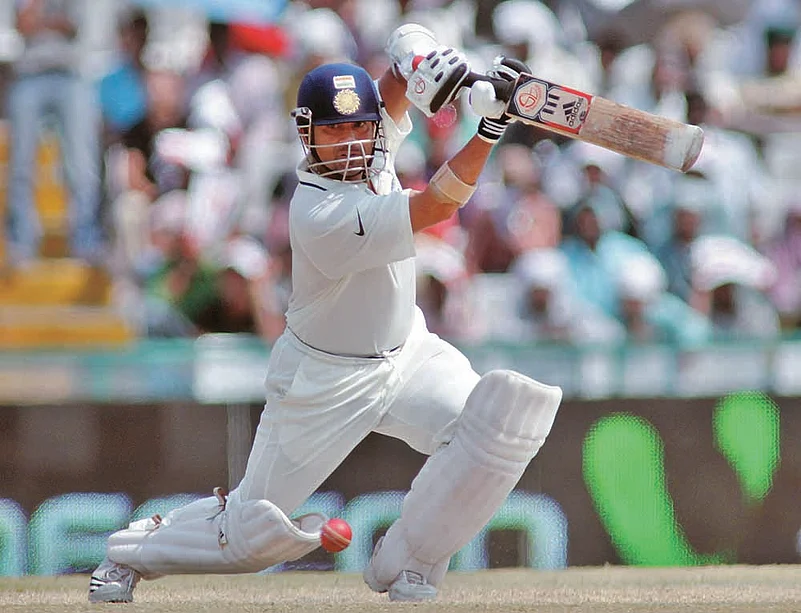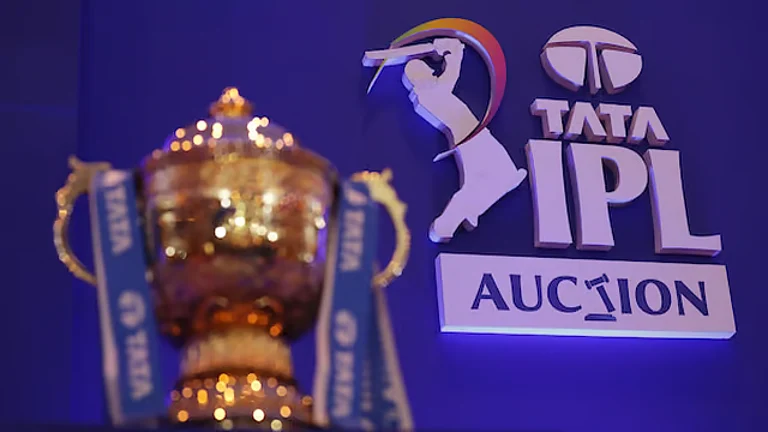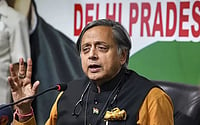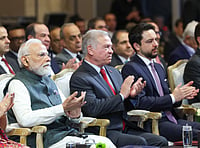A career as long and variedly brilliant as Tendulkar’s bestows on its observers a unique privilege: a mini-career of their own, of watching Sachin. The business of rating Sachin’s centuries becomes terribly important. There is no parameter called ‘affection’, however; we make do with the norms of the world. Curiously, for someone with 51 Test centuries, some of my fondest Sachin innings never got to a hundred. They were little and taut and perfectly formed, much like their maker.
Four of them were at Sachin’s own playground, the Wankhede, which for two decades was my home ground too as a spectator. Each of them was against an ace attack in peak form and on such bowling pitches that in each instance the match finished in three days.
The first was a 97 he scored against a raging Donald, Pollock, Klusener and Kallis, not to mention Sachin’s anointed nemesis, Hansie Cronje, who had him LBW for 8 in the second innings (padding up in anticipation of away swing, if memory serves). It was the year 2000. Sachin meant everything in those days—those days between 0-3 in Australia and before the match-fixing scandal broke. A few days earlier, Sachin had announced that he would resign from the captaincy at the end of the series. We had exams at college. To submit our incomplete papers in those sombre halls as soon as the mandatory half-hour was over, to race towards the ground, heaving with chants to Sachin, to watch him drive off the backfoot against hostile fast bowling was to feel the thrill of youth and cricket and Sachin.
The other three Wankhede mini-virtuosos were all versus Australia, two of them in the same match: in fact the opening and much under-rated Test of the epic 2001 series. It was a hot-headed and dramatic match, the former exemplified by Michael Slater’s meltdown on the field, and the latter by Gilchrist and Hayden’s stunning counter-attack. But Gilchrist and Hayden didn’t have to face their own bowlers. McGrath, Gillespie and Fleming, getting an Australian lift and carry off the pitch, were bowling ruthless lines. Warne, revelling in the bounce too, suggested he might turn around his record in India with four wickets in the first innings. Sachin’s twin solos against them, 76 and 65, were outstanding. The match was played in the colossal shadow of Don Bradman, who had passed away two days before, and from somewhere up there he would have approved. In the second innings, battling to keep India in the game, it took bad luck and an incredible catch—Ponting swooping in on a pull that had ricocheted off Langer at short-leg—to remove Sachin. As he trudged off the pitch, heroically alone in defeat, it felt that nothing had changed since the 1990s, and nothing ever would.
But a lot did indeed change by the time the Australians came around in 2004. By now India was no longer a team dependent on Sachin. Yet, to such heights had Australia risen that they wrapped up the series by the time the show moved to Mumbai for the fourth Test. Sachin had missed the first two with injury, and struggled in the third. Both India and he were playing for pride. Perhaps no surface in Indian history has been vilified as much as the sandpit that Polly Umrigar served up at the Wankhede: but it provided riveting, extreme cricket. Twenty wickets fell on the third and final day of the match, which contained a sublime partnership between Laxman and Tendulkar, each crafting a brisk and graceful 50 under pressure. I rushed to the stadium to watch India’s tumultuous defence of 107. However, to this day one of my biggest regrets is that I wasn’t at the ground to watch Sachin and vvs make their little castle out of sand.
Perhaps the most heavenly batting I saw from Sachin—made more heavenly by the light—was in the prettiest of England’s Test grounds, with the prettiest of names, Trent Bridge. The weather had been capricious and British: gloomy enough on the first morning for England to pick five seamers. For five days thereafter, it veered between unplayably dark and dazzlingly bright. Sachin’s moment in the sun came late on the fourth day, at the hour when tropical people are startled to find any prospect of light. In the brilliant low sun, the grass, the men in white, the joyful crowd, they all looked beautiful, the sort of image which Martin Johnson described in The Telegraph as “a misty-eyed trip back in time to those Cardusian days at Trent Bridge, when the birds twittered, the sun shone, and it was always 330 for three at 3.30 in the afternoon”. Except that for India it was not 330 for three, more like 330 behind, struggling to save the Test and series.
Sachin’s batting that evening was stunning. Punches through cover, whips to leg, alert to opportunity, nimble of feet, in one of those moods where he’s looking to move and stroke, not wait and deflect. He raced to his 50 at quicker than a run a ball, laden with boundaries, finishing the day on 56, and diehards will remember the massive offbreak that Michael Vaughan produced the next morning to bowl him through the gate. Ninety-two from 113. Glorious innings.
An odd entry in this list is an innings he played in Georgetown in 2002. The now discontinued Bourda Cricket Ground was perhaps the world’s most atmospheric venue, fully wooden in a wooden town, drenched in rum, but alas, cursed with heavy rain, terrible drainage and a too-flat pitch. A three-hour 79 on a third-day Bourda pitch against an attack of Dillon, Cuffy, Sanford and Nagamootoo is, therefore, not especially striking. But I remember that innings for its lovely poise. His deliberately minimal movements were calibrated to such perfection that, watching, the great Everton Weekes remarked that not many would appreciate its technical refinement. And this is the second reason I remember that innings. Sir Everton’s comments resulted in a terrific press-box fight between two middle-aged journalists, one of whom claimed to have arranged this exclusive interview, to find unwelcome company. Sachin, always, the story.
Opposite Georgetown on the difficulty scale was notorious Hamilton in 2002-03. The pitch was an absolute lawn, the weather was rainy and Shane Bond was in his pomp. It was the kind of match where one day’s play featured all four innings. Sachin’s 32 from 48 balls on that day fell short of being match-turning but, as they say: my word!
It was a much-heightened version of Centurion in 2010, not the landmark century of the second innings, but the 36 in the first dig. On the tented, juiced up pitch where Steyn and Morkel had hounded out the top order, he came out and pulled through midwicket and drove through cover at faster than a run a ball. Admittedly, the majority of those boundaries were against Tsotsobe, but even so. The inarguable sign of a great player is that he can make shots when others are struggling to make contact.
Finally, there is one innings I wish I could have recounted first-hand: Sialkot. Sixteen years old and looking 12, walking in at 38-4 in the last innings of the last Test with the series tied, against an attack of Imran, Waqar and Wasim, who was warned at one stage for intimidatory bowling, hit on the nose by a raw and hot Waqar, he bled on the pitch, waved off medical assistance, struck the next ball for four, compiled a half-century and added with Navjot Sidhu a hundred to put the game beyond Pakistan. “Main khelega,” he had said to his concerned partner, and, as ever, he did.
(This article originally appeared in Outlook’s special issue on the occasion of Sachin Tendulkar’s 50th century in February 2011)


























